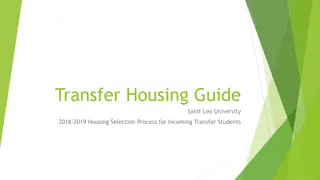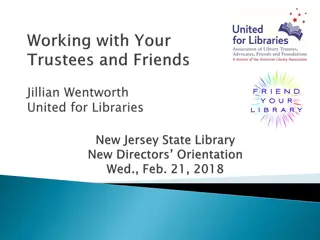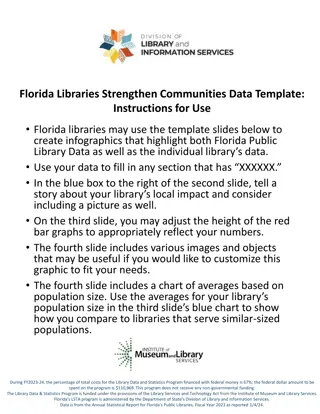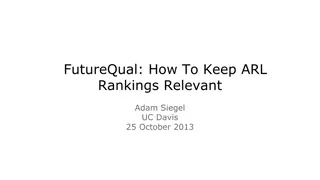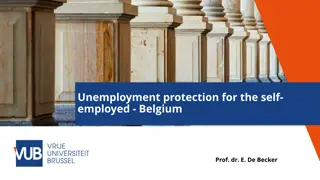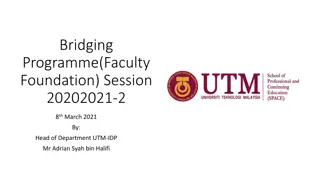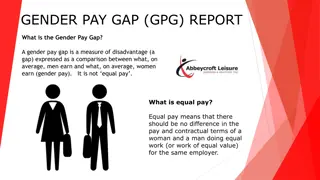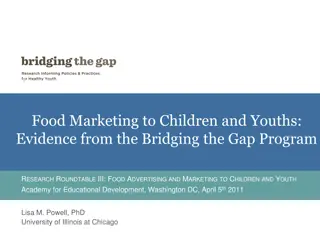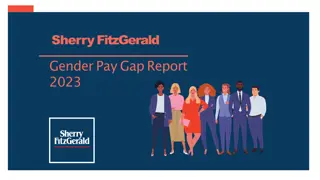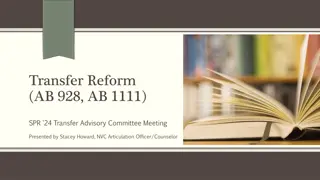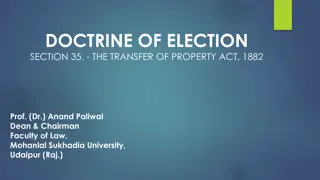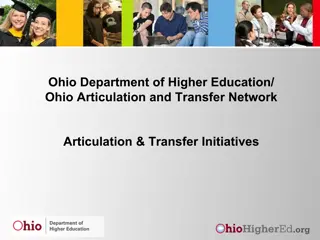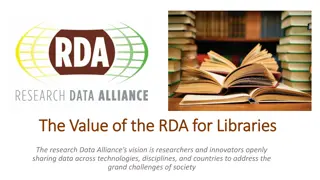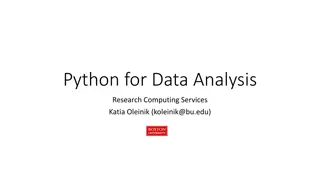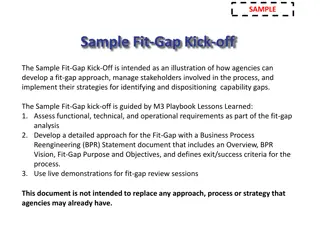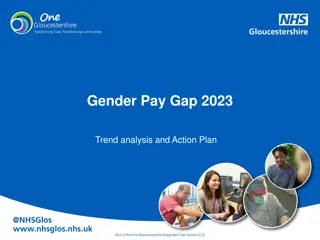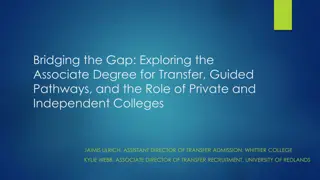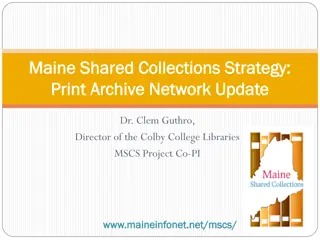Understanding and Bridging the Gap for Incoming Transfer Students in Libraries
Discover the challenges and opportunities for incoming transfer students in academic libraries through research findings and strategies presented by Karen Stanley Grigg and Lea Leininger at the University of North Carolina. Dive into the dilemma of hidden transfer populations, explore ways to gather knowledge and design research studies, and learn effective approaches to reach out to these students for improved library services.
Download Presentation

Please find below an Image/Link to download the presentation.
The content on the website is provided AS IS for your information and personal use only. It may not be sold, licensed, or shared on other websites without obtaining consent from the author. Download presentation by click this link. If you encounter any issues during the download, it is possible that the publisher has removed the file from their server.
E N D
Presentation Transcript
Incoming Transfer Students- Who are They, Where are They, How Can We Bridge the Gap? Karen Stanley Grigg and Lea Leininger University of North Carolina at Greensboro Libraries 1
Transfer students miss opportunities to interact with dedicated first year literacy instruction librarian Transfer students often difficult to identify Diverse educational backgrounds with different levels of exposure to scholarly research and information literacy training What do they need, and how do we provide it? Why study transfer students? 2
Eggleston and Laanan (2001): concluded 4 year institutions fall short of providing adequate services to transfer students. Townsend (1995): transfer shock ; i.e., drop in GPA during first year for new transfer students. Phillips and Atwood (2010): OhioLINK librarian survey: less than 25 of 200 or more reported classes were taught to transfer students. Tag- Western Washington (2004): survey of incoming transfer students- some familiarity with library resources, but over half requested library instruction. Gross and Latham (2011, 2012): Students who score below average in Information Literacy believe they are more skilled than they are. Research on transfer students 3
1. Describe the dilemma Some professors expect students already know the library Hidden transfer population might not get library instruction Baseline information literacy competencies in this group? 2. Gather existing knowledge Local information Institutional data, student services Other institutions Literature review of needs, services 3. Enough info to target a library intervention? No 4. Design a research study How to approach a study? 4
How to reach out to incoming transfer students Online survey Email address list from registrar How to get responses Chance to win a $25 gift certificate (two total) Institutional Review Board needs? Needed to submit project to IRB All three investigators needed to complete IRB training How would we use the survey results? Share with liaison librarians Initial discussions 5
Discussed content Reviewed other surveys, ACRL Information Literacy Competency Standards Added demographic questions Kept survey as brief as possible Initial questions pilot tested in paper and online (Google form) Revised survey submitted to IRB Survey Design 6
Incoming grade level Type of institution from which student transferred Major/s Previous exposure to scholarly research and research instruction Knowledge of basic information literacy concepts Perceived needs Data collected: 7
Percent (n=154) Cumulative Percent 18-21 35.7 35.7 22-29 35.7 71.4 30-59 27.9 99.4 Missing .6 100.0 ..Age of respondents 14
Frequency 85 22 Percent 55.2 14.3 Community College Another UNC system school University or College outside the UNC-System Online Courses Missing Total 41 26.6 1 5 154 .6 3.2 100.0 Transferred from 15
Major Biology Supply Chain Management, Consumer Apparel, Entrepreneurship Speech Pathology/Deaf Studies Family Studies and Family and Human Development Nursing Sociology, Social Work, or Humanities 10 Number (n=156) 17 14 11 11 11 Health Sciences and School of Business represented heavily. Most common majors 16
Frequency 24 51 71 5 3 154 Percent 15.6 33.1 46.1 3.2 1.9 100.0 Knowledgeable Fair Poor Other Missing Total About 73% either fair or poor in terms of knowing appropriate use of search terms! 17 How knowledgeable is respondent of search terms to use?
Knowledgeable 13.3% 18.2% 20.0% 0.0% Fair 33.3% 45.5% 40.0% 42.9% Poor 53.3% 27.3% 40.0% 50.0% Other 0.0% 9.1% 0.0% 7.1% Biology Pathology/Audiology Sociology Supply Chain Management Family Studies/Development Nursing 9.1% 27.3% 63.6% 0.0% 18.2% 27.3% 54.5% 0.0% Overall, 15.6% were knowledgeable, 46.1% poor Knowledgeable by major- all majors where n>10 18
AGE x KNOWLEDGE OF SEARCH CRITERIA (N=154) 30 25 20 15 10 5 0 Knowledgeable Fair Poor Other Missing 18-21 22-29 30-59 Missing In the knowledgeable group, the smallest percentage was in the 30-59 age range. 19
Transferred from another University outside the UNC system Transferred from another institution in the UNC system Transferred from Community College Transferred from online class Knowledgeable 7.1 % 36.4 % 24.4 % 0% Fair 34.1 % 27.3% 34.1% 100% Poor 50.6% 36.4% 39% 0% Other 4.7% 0% 2.4% 0% Missing 3.5% 0% 0% 0% Total 100 100.1 99.9 100 Knowledgeble scale for each transfer institution type 20
98.7% of respondents have written a research paper with a bibliography. 98.1% chose .gov web site over blog site for research on effects of tobacco smoking. 21.6% have never had library instruction. Other interesting stats 22
Survey Design Questions are easiest to analyze if only one answer per question. More demographic variables provide more significant connections. Make sure the questions you ask will provide the results that you want. Need a lab notebook of sorts that records why we made some of the decisions we made Lessons learned 23
Make sure to build ample time for dealing with IRB issues. Permissions must be documented. Pilot testing is essential. Often must find creative way to problem solve unexpected results. You will always think of that question you SHOULD have asked after the fact. Be thinking of follow-up studies throughout the process. Statisticians are great, but speak a different language. Clarify, clarify, clarify! General tips 24
Using data, develop services and instruction that transfer students want and need. Find creative ways to market our services and reach out to a population often difficult to target. Design follow-up studies, examples: Comparing incoming transfer students to cohorts who have been here. Follow up studies on transfer students after receiving information literacy instruction here. What are our next steps? 25
Thank you to Jeffrey Blake for many diligent hours analyzing our data and creating cross tabs and tables for us!!!! Thank you to Jenny Dale for being an integral part of our research team!! Acknowledgements 26
Any questions? Contact us at: ksgrigg@uncg.edu 336-256-8585 laleinin@uncg.edu 336-256-0125 Thank you! 28


